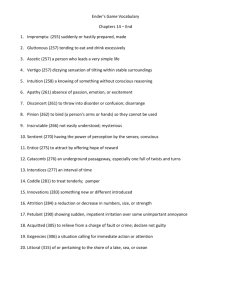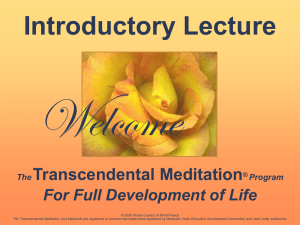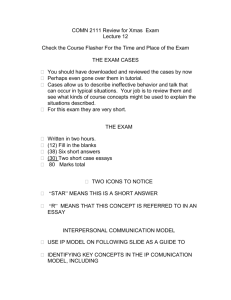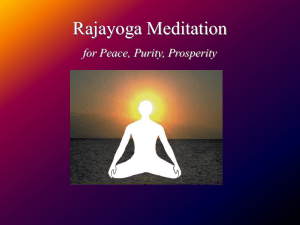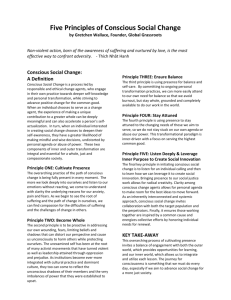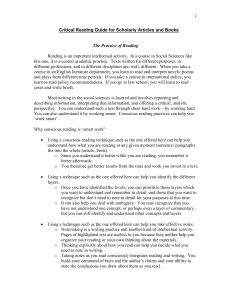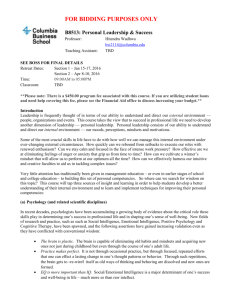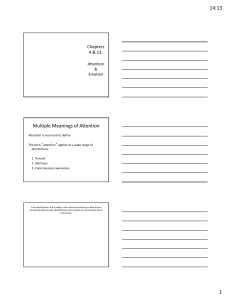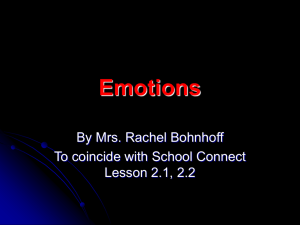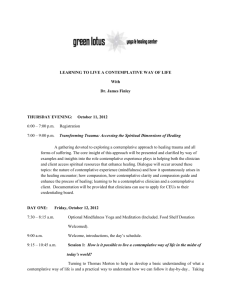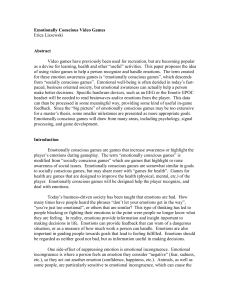Contemplation of Nature and Naturalness Orientation
advertisement
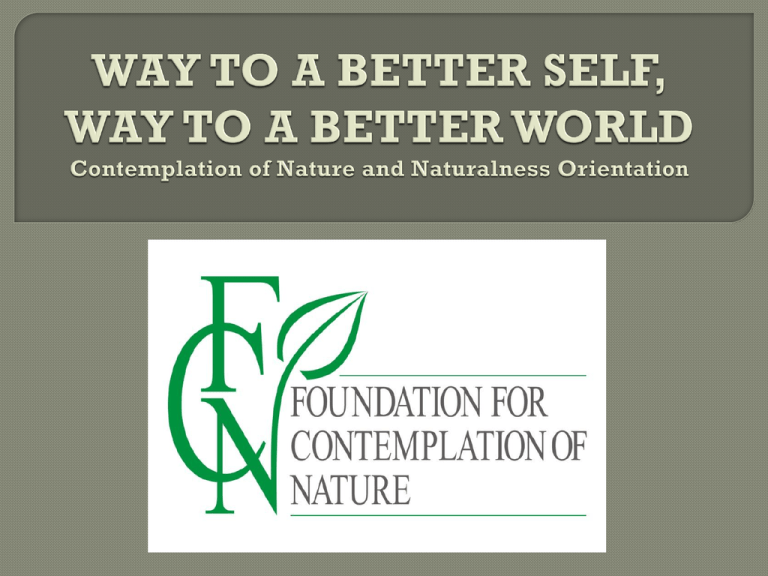
5 -7 minutes intro of participants 10-12 minutes of explanation of concept and practice 23-25 minutes of practice 2-3 minute of feedback 20-22 minutes of post practice theory 20- 22 minutes of discussion We all work in the field of environmental conservation; do we feel satisfied with the pace - complexity? do we feel that the cumulative efforts of small steps to save envt are going to work – projects? is rising consumerism one amongst the root causes of environmental destruction? does access to more goods and material assets give happiness how can we change the aspirations and behaviours of people to care for nature is there something common in caring for fellow human beings and other life Using a variety of methodologies and measures, researchers have shown that exposure to the natural world decreases negative behaviours and states (e.g., aggression, anxiety, depression, illness) and increases positive ones (e.g., affect, health, cognitive capacity). The big picture is clear: Exposure to nature leads to many desirable outcomes Interestingly, similar findings from the affect of positive emotions: a recent meta-analysis of nearly 300 findings concluded that positive emotions produce success and health. Research indicates that positive emotions contribute to important downstream life outcomes including compassion, care, empathy friendship development and longer lifespan. Cognitive: dominant method – reading, writing, presentations, talks, films etc. Experiential : Feel and see; guided or experimental; outdoor nature experience, nature tourism Contemplative: being mindfully present : not thinking, interpreting or evaluating. Its an awareness of perception; development of faculties for insight and creativity. Aim at Cultivation of attention and emotional balance . Soft Gaze Contemplati on of Nature and Naturalness Orientation Sympathetic Attention Disinterestedness Choose a view or a natural object Landscape to a potted plant Relaxed and open eyes Blink and close Multi-sensuous engagement Supports although not actively engaging the senses We often forget that human beings too are biological organisms All biological organisms have a dynamic relationship with their environment Human effort has been to design and create more artificial environment to have more controlled and set pattern in life This has increased the physical, mental and emotional distance from the natural environment distance from the subjects own needs, desires, concerns and outcomes sense of unity of our experience without its subordination to any scientific or moral concepts and purposes Kant – immediate encounter beautiful natural world is a perpetual source of aesthetic experience through contemplation even without an active pursuit of knowledge Classically “transcendetal” as a species whose survival depends on the ability to build mutually beneficial relationships with others, human beings have a deep-seated need to feel connected, to be trusted and loved, and to trust and love in return. A sense of connectedness also increases empathetic responding as well as acts of cooperation, which tend to have mutually reinforcing effects Classically - love and kindness meditation Reminder of natures role in survival Flourish MSRB – mindfulness based stress reduction 22 minutes Calm mind – relaxation trigger for physiological functions Recommended duration is 30 minutes Depends 20-40 minutes No dress code, no recitations, no set postures Settle down comfortably and relax Soft gaze Disinterestedness Sympathetic attention Bell in the beginning Remind with instructions after 10 minutes Second bell after 20 minutes Two bells at 23rd minute A minute to unwind Calmness Deep silence Simplicity Tranquility Overwhelmed Personal experience Scientific why and how Tranquility Excited Bored Anxious/ Depressed Happiness Intensity of Emotions The aim of meditation is to reduce or eliminate irrelevant thought processes…., thought to lead to physical and mental relaxation, stress reduction, psycho-emotional stability and enhanced concentration. Physiological evidence shows a reduction with meditation of stress related autonomic and endocrine measures, while neuro-imaging studies demonstrate the functional up-regulation of brain regions. Clinical studies show some evidence for the effectiveness of meditation in several disorders Several ways Biophilia - humans akin to other species - phylogenetic continuity Concurs from the field of psychology -landscape affinity (natural & social) Eastern thought – Panchmahabhutas (earth, water, air, space, fire) Shinrin-yoku - Forest bathing in Japan (making contact with and taking in the forest atmosphere) – profile of mood states Innate drive - emotional needs What is constructed or reconstructed in these intimate moments of contemplative absorption when self becomes other then just itself? Feelings for others and understanding of them may be altered; new registers of feeling and fresh angles of understanding may contribute to an ‘expansion’ of self and self-meaning; new vocabularies of experience may be acquired and old ones extended, and there may be a special pleasure qualifying the time during which it happens without conscious perception, emotion discrimination is possible perceptual systems and the emotional systems in the brain are two separate systems in parallel one can give rise to unconsciously processed emotional bodily responses, second to conscious perceptions (including cognition) These neuro-scientific findings explain emotional responses and even emotional learning without conscious cognition emotional feelings are directly experienced, and arise from within, the personal validity of information they appear to convey seems self-evident to the person experiencing them conscious thinking could prove an impediment in achieving a deep soothing state deeply influences our awareness and enhances sensitivity release of anxiety and frustrations that may have been uncons pulling us down, yield freedom and contentment freedom and contentment are the key ingredients for autonomous decision making autonomy is all about being able to do what one believes in Naturalness can be explained by the contrast between what a person wants simply in virtue of being the kind of organism s/he is – and what this or that person learns to want by being luxurious, fanciful or fashionable. The latter describes people whose wants have been conditioned to a greater extent by the influence of the society. The former, who is considered more natural, retains a greater degree of autonomy from the influence of the society Increasing evidence of violence, rudeness, self centeredness, apathy, unhealthy competition, drugs, psychosomatic diseases, lifestyle disorders are visible even in that class which is educated, has material comforts and access to modern amenities Exposure to natural environment decreases negative behaviours and states – aggression, anxiety, depression, illness Increases positive ones – affect, health and cognitive capacity State of mind affects the state of body Objectives: To create and encourage among all people a direct personal experience of Nature; 2. To posit a communion with Nature as a means of enhancing human well being in all its facets; 3. To help elevate the conservation of Nature to a level at par with other societal concerns such as the elimination of poverty, hunger, drugs and social corruption; 4. To promote Contemplation of Nature practice in all its diversity to enhance mindfulness; inner motivation and transformation of individuals as effective change leaders. I believe that there is a subtle magnetism in Nature, which, if we unconsciously yield to it, will direct us aright. ~Henry David Thoreau

